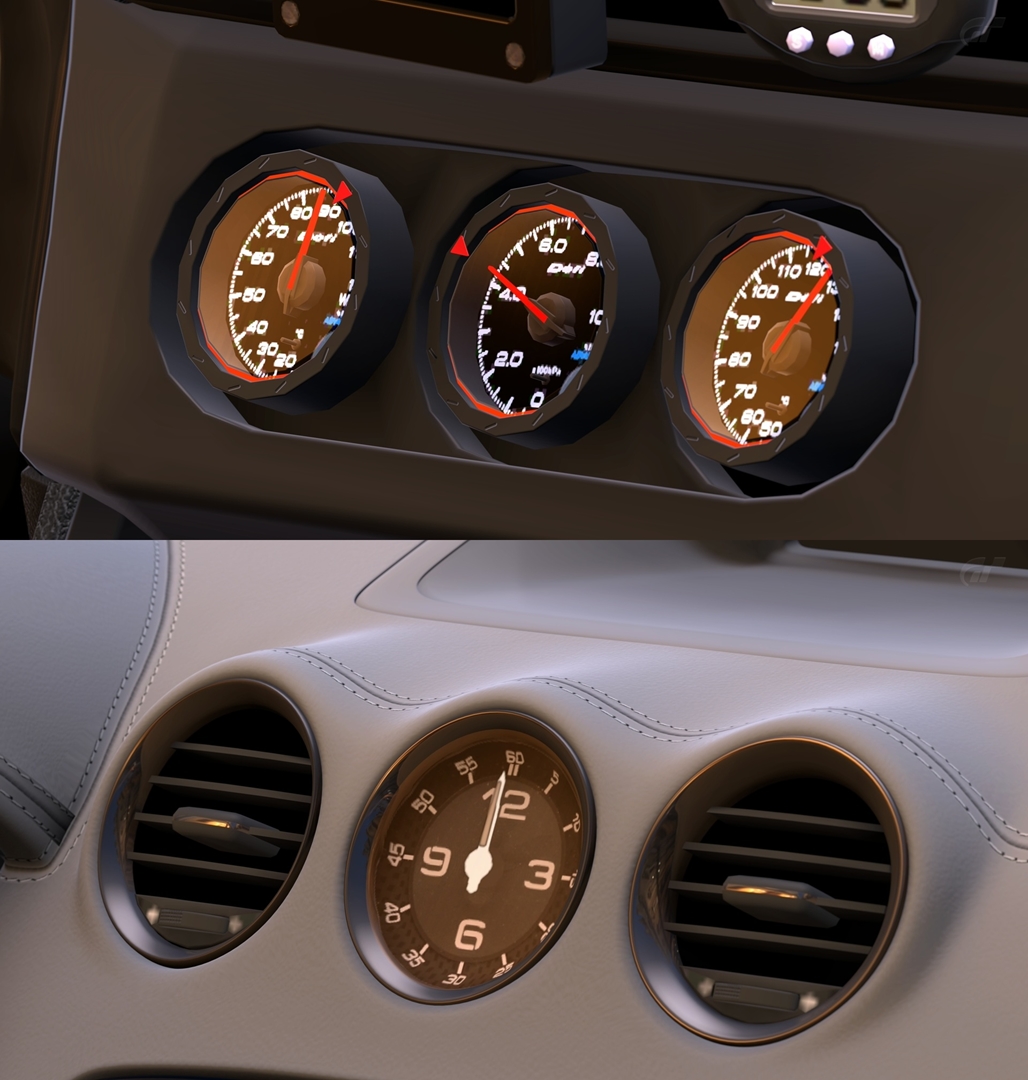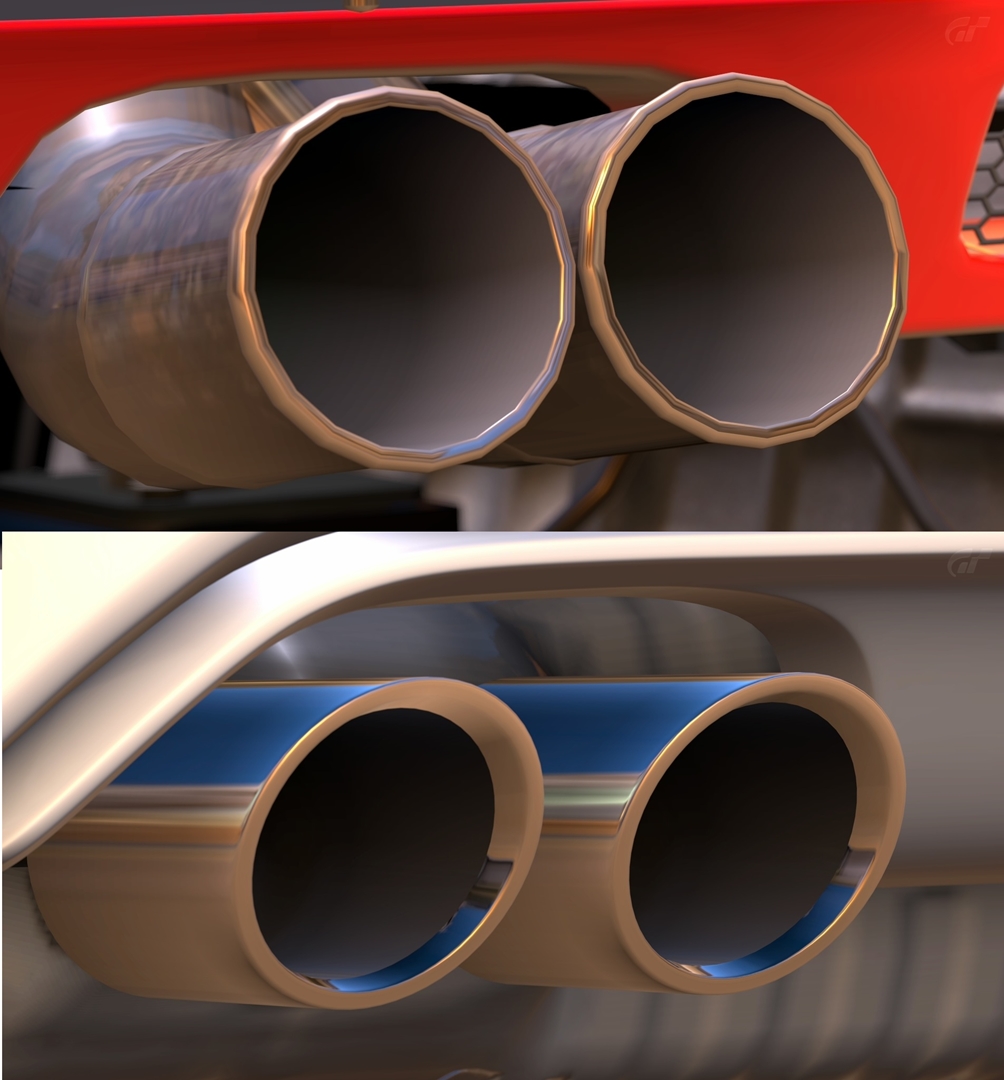Install the app
How to install the app on iOS
Follow along with the video below to see how to install our site as a web app on your home screen.
Note: This feature may not be available in some browsers.
You are using an out of date browser. It may not display this or other websites correctly.
You should upgrade or use an alternative browser.
You should upgrade or use an alternative browser.
*spin-off* Tessellation
- Thread starter almighty
- Start date
How does tesselation work in that game? The camera is static. Or is it a bug?I came across a nice example that actually highlights tesselation in GT6:

How does tesselation work in that game? The camera is static. Or is it a bug?
It's clearly load-balanced. This is zoomed a bit, but you can see that initially the car is slow or stopped on the grass and then starts driving again onto the road and gain speed, so that would increase the engine load and so tesselation reduces detail dynamically.
Note that SPEs are doing the tesselation here as the GPU doesn't support it yet in the PS3. So the tesselation logic and method may differ a little from what you're used to on GPU (though no idea, I'm not an expert either!)
hesido
Regular
As far as I know, they are smoothly transitioning between lower/higher dynamically tesselated geometry. Since it's parametic, the transitions are very smooth, tackling this using stored lods could be a more complex problem to solve (e.g. deciding which vertex to collapse), though I'm talking without much knowledge here.Are they blending between stored LOD's ?
Whenever I hear of dynamic LOD based Tesselation for displacement maps being unusable because of the wobbling and vertex swimming it creates, I assume that has a lot to do with how new created vertices slide into position from the pre-exising ones as most demos usually demonstrate. But can't new vertices "pop" mid quad and have the height displacement be the thing that smoothly goes into place? In other words, new vertices are created already where they are meant to be within the polygon surface (no tangential sliding) but within the average height of its parent vertices (no influence on the geometry shape), and from there it progressively displaces into its actual height as sampled from the appropriate mip-level of the heighmap as the camera gets closer. I guess the artifacts would be much smaller this way. There'd still be visible morphing because of the screen-space size ploys would have to be kept at to maintain performance, but it would be much more stable and consistent wouldn't it? What am I missing?
Weak when compared to nvidia, but weak overall I don't know.Heard GCN core is weak for tessellation?
I have a few games that use tessellation and i've not noticed thatbeing unusable because of the wobbling and vertex swimming it creates
It's not, NV just has a better tesslator, but at the cost of some other weakness...Heard GCN core is weak for tessellation? If So than we may not see a lot of use for it on current consoles.
Problem with tessellation is that it's no silver bullet, you need a fairly tessellated mesh to further tessellate, which crush the initial idea to have low triangle count mesh and use tessellation as LoD. So it is expensive to have a tessellated model even before you tessellate it, making it not so interesting. With time we may get better tools to produce such meshes that would be usable for LoD too, but as of now, it's not really the case. I expect it to be used for main characters, terrain and a few other cases, but we are not at the point it can be used for everything on screen yet.
For better tesselation I suppose you'd need graphics tools and formats where you can define arcs and such rather than have models that are triangles already, and then an engine that handles that correctly. I don't have any idea of what the state of the art is in that respect? (but I have my suspicions)
@Laa-Yosh has never supported the idea of HOS representations for several reasons. The fundamental problems with the format for representing models are still unchanged even if the hardware to render those surfaces has. For things like pipes and wheels, HOS probably make sense, but not for more varied or curvaceous stuff.
Similar threads
- Replies
- 25
- Views
- 3K
- Replies
- 37
- Views
- 3K
- Replies
- 21
- Views
- 4K




